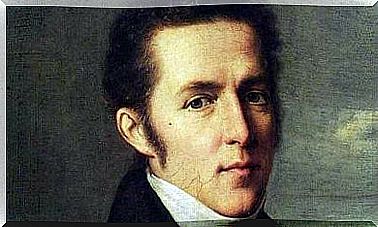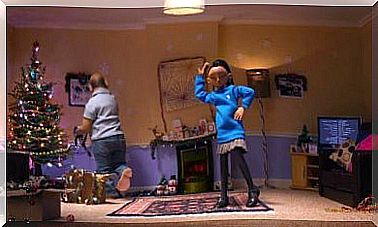GAD And Cognitive-behavioral Treatments

Excessive anxiety and worry are two of the main characteristics of generalized anxiety disorder (GAD). There is no difference in content between the concerns of “normal” people and those of people suffering from GAD. However, Dugas and Ladouceur (1997) indicate that the latter worry in more situations and of lesser importance.
People with GAD worry about unlikely situations, they also maintain the state of worry over time, as they jump from one to the other. People seeking treatment have greater anxiety, less perceived focus, and a greater need to control their thoughts.
Generic or classic cognitive behavioral therapy for GAD
Cognitive Behavioral Therapy (TCC) combines Beck’s cognitive therapy and applied relaxation training. Clinical data confirm that applied relaxation and TCC modalities are relatively effective. Classic cognitive therapy includes the following components:
- Training to notice the internal stimuli and external events that cause anxiety, and the reaction in their presence.
- Stimulus control strategy to defer worries to a specific time and place of the day.
- Relaxation. Several techniques were employed: progressive relaxation, slow and regular breathing and meditation techniques.
- Cognitive restructuring of the content and usefulness of concerns. The thoughts, images and beliefs associated with the anxious response are identified. The Socratic method is used to examine the data for and against, generate alternative interpretations and decatastrophize.
- Graduated exposure, through the imagination and live, to situations and internal stimuli that trigger anxiety. The aim is to learn how to manage it through the application of the learned strategies.

Borkovec’s cognitive behavioral therapy
TCC from Borkovec’s group includes all elements mentioned in generic or classic cognitive behavioral therapy, plus two others that are part of acceptance and commitment therapy:
- Minimizing Negative Expectations and Predictions : The idea is to live more in the present without continually correcting erroneous expectations about future events.
- Living according to one’s own values : the patient’s values are defined in order to carry out activities in the present moment that allow him to achieve them.
Barlow’s cognitive behavioral therapy for GAD
Brown, O’Leary and Barlow (1993, 2001) have developed a treatment for GAD that includes conceptualization of the problem and justification of treatment, relaxation training, cognitive restructuring, exposure to the fears underlying the worry, prevention of safety behaviors. and time organization.
We analyze them in detail below:
- Relaxation training : based on Bernstein and Borkovec’s progressive relaxation training. Any relaxation technique that has proven effective for the patient can be used.
- Cognitive restructuring : follows Beck’s principles. The concept of negative thoughts, the influence of situations, the impact of interpretations and predictions on what we feel and do is explained. There is a need to identify specific interpretations and predictions in order to be able to question them.
- Exposure to the fears underlying worry : consists of exposure to troubling images, including vivid imagery of the worst feared consequence. The latter promotes greater emotional activation and the reduction of worries.
- Change of safety or defensive behaviors: active avoidance behaviors must be prevented and must alternate with the activities that the client avoids carrying out (live exposure).
- Time Organization : Teaching skills for organizing time and setting goals.
- Troubleshooting : The troubleshooting technique makes it easy to find solutions to existing problems.
The intervention extends over 12-15 weekly sessions lasting one hour, applied individually given the difficulties of carrying out the exposure through imagination in a group.
In the most updated version, the treatment of assertiveness is added, the interruption of drug treatment and it is important that the patient’s family participate in the therapy.

Dugas’ cognitive-behavioral therapy
Dugas’ group (Dugas and Koerner, 2005; Dugas and Ladouceur, 1997; Dugas and Robichaud, 2007; Robichaud, 2013) proposed another type of intervention for the GAD. Over time this treatment has undergone some changes
Treatment modules
- Psychoeducation and awareness training : differentiating between concerns based on reality and modifiable, based on reality and unchangeable and based on very unlikely events.
- Re-evaluation of the utility of worry : in therapy, the patient’s tendency to overestimate the benefits of worries and underestimate the negative consequences is emphasized.
- Problem-solving training : If you have concerns about current problems, resolution of the problems is proposed. Problem solving training has two basic elements, problem orientation and problem solving skills.
- Exposure, through imagination, to the fears underlying the worries : showing the client that trying to avoid thoughts can be counterproductive. For this purpose, the white bear experiment can be used.
Additions and / or improvements in the most recent versions of 2007
- Uncertainty Recognition and Behavioral Exposure : The goal of this module is to induce the client to understand the fundamental role of intolerance to uncertainty in developing and maintaining excessive worry and anxiety.
- Preventing relapses : brushing up on the notions and skills learned and emphasizing the need to continue to train those skills.
Finally, the patient is encouraged to develop an action plan before the end of therapy. He is encouraged to set goals in order to progress even without the help of the therapist.

Wells metacognitive therapy for GAD
Wells suggested that the treatment of GAD must center on questioning concerns. It is about addressing “the style of worry”, instead of the content of the same. Therapy includes:
- The individualized formulation of the case (functional analysis).
- Training education, the identification of two types of beliefs. Negative beliefs about worries and dysfunctional beliefs about the utility of the latter.
- Challenge these beliefs through verbal restructuring and behavioral experiments.
- Eliminate poorly adaptive strategies. For example, attempts at thought control, defensive behavior and avoidance. All of these strategies interfere with the self-regulation process and help maintain GAD.
Treatment concludes by reviewing alternative strategies for dealing with intrusions and stressors that trigger concerns.
Finally, let’s not forget that every concern is a wake-up call, so the way it is generated is closely related to our ability to interpret reality and make deductions starting from the information we receive.
When this warning system does not work well, because too little or too much information is omitted, as we have seen in this article, the person suffers.









